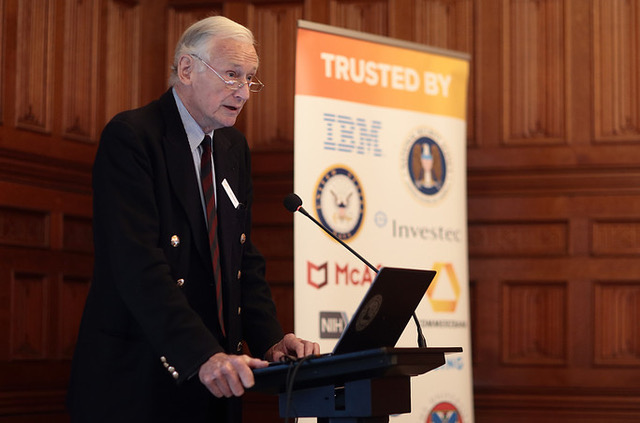Bridgeworks CEO, David Trossell speaks to Global Banking & Finance Review about the success of WAN Acceleration for banks.

May 12, 2021
The Covid-19 pandemic has created a push to speed up digital transformation. There has also been the move to the working from home environment and embracing hybrid working as a concept, whereby employees work from home as well as in branch or at the office. This has led to a transformation in data flows and changes in bank processes to adapt to less face-face contact with customers. All of this has inspired the upgrading of IT infrastructure with many banks deploying or upgrading their SD-WANs.
Despite more banking transactions being conducted remotely via smartphones, PCs and tablets, the bank branch hasn’t died. There is still investment in their branch networks. For example, Finextra reported on 15th July 2020, that Australian bank Westpac has upgraded its branch bandwidth with an SD-WAN roll-out to 300 branches in New South Wales, the Australian Capital Territory, Victoria and Queensland.
In the report, Westpac head of secure network services, Wayne Bonett, claims: “The roll-out of this new technology in branches is an important part of our broader strategy to modernise our underlying infrastructure and consolidate legacy technology systems. “We have already seen improvements in branches, with 5x faster mobile banking application downloads for customers, reduced transaction times and more reliable free Wi-Fi for customers.”
With increased meetings and the need for more collaboration online, the banks have found that its SD-WAN deployment has enabled these activities by improving video conference quality; and it claims that it has permitted faster direct access to cloud hosted services like Microsoft Office 365.
BNP Paribas has also recently rolled out an SD-WAN across 1,800 bank branches as part of its digital transformation. A press release on Finextra that cites BNP Paribas as the source, comments that the new platform and the SD-WAN they’ve adopted enables “close collaboration between business and IT for greater agility.” One of the goals is to permit the “quick and easy deployment of multiple services, such as dynamic routing and path selection, with scalability and flexibility.”
“It also empowers administrators to monitor infrastructure performance and resolve potential network congestion through simple software modifications, thereby optimising application performance. By deploying SD-WAN, BNP Paribas can take advantage of a fully secure hybrid network that is natively multi-cloud, multi-access and multi-application. The bank will also benefit from optimised and centralised management and intelligent routing for its new infrastructure. ”
Improving SD-WAN performance
SD-WAN on its own is a great technology, and the new SD-WANs of Westpac and BNP Paribas may do the job; but they may also be able to still improve their SD-WAN performance. Upgrading bandwidth won’t often be the answer to reduce the gremlins of latency and packet loss. So, arguably, banks and other financial services organisations could do more by improving the performance of their new SD-WANs, or their existing IT and network infrastructure, with WAN Acceleration solutions, such as PORTrockIT, which can provide an overlay to enhance the performance of SD-WANs.
By mitigating the effects of latency and packet loss, with the help of artificial intelligence (AI), machine learning and data parallelisation, data throughput can improve by 98%. Supported by WAN Acceleration, organisations can increase their network performance, including their SD-WAN performance, and achieve 10 times more improvement on performance of data movement to and from the cloud, irrespective of compression or encrypted data formats. It can also be deployed to enable regulatory compliance or faster, more secure and more reliable Backup-as-a-Service (BUaaS).
Whilst many of the SD-WAN applications providers are focusing on the lower end of the enterprise market, there are those who are focus on the higher Gigabit and tens of Gigabit enterprises. This brings into play the effects of latency, packet loss and jitter – even on what is regarded as a short distance. Much of the performance degradation of Gigabit network connections is done around between 4 and 10ms, where 70% of the performance can be lost. With rich media and encrypted or compressed data, coupled with high bandwidth, WAN optimisation – and to a degree without WAN Acceleration – techniques struggle to add any value.
Different approach
What is required is a different approach to data acceleration to mitigate the effects of latency packet loss and jitter. A different approach is now needed. Rather than trying to reduce the amount of data over the WAN to give the illusion of increasing bandwidth, it’s possible to use AI, machine learning and data parallelisation to take the utilisation of the WAN to 90%+, irrespective of the data type or the distance involved. The AI reduces the burden on the network administration by managing the way data flows into the acceleration node across the network and exiting the far node. This occurs while constantly adjusting the configuration and parameters to maintain the maximum throughput at all times.
Investec Private Banking
Investec Private Banking has 10,000 employees and aims to deliver a shared value proposition to clients in South Africa and around the world. The bank offers specialist banking, wealth, investment and asset management services across all geographies. It is achieving its ambitions through continued investment in digital capabilities. The bank, while being based in South Africa, operates in partnership with a major European bank, which means that aspects of its operations are subject to European regulations, such as the General Data Protection Regulations (GDPR). As a result, the bank must comply with data sovereignty requirements, which stipulate that the data supporting its SecuritEase settlement and clearing system must reside on servers based within the European Union.
At the same time, the regulations require the bank’s systems to be synchronised regularly, so that all business units are always working on current data. This combination of requirements caused problems for Investec. Users in South Africa needed to be able to access data stored on servers in the UK, but the sheer physical distance between the data centres meant there was latency across the wide area network.
The bank’s WAN averaged around 180ms. Under these conditions, it took 14 to 15 hours to move a dataset between Oracle databases in the two countries, which caused challenges in keeping Recovery and Resolution Planning (RRP) data synchronised. Recovery point objectives (RPOs) and recovery time objectives (RTOs) were not being met, which in turn meant that the bank risked missing critical business commitments, such as its GDPR obligations.
The root cause of the problem was not the Oracle replication itself, but the constraints of the WAN. Adding bandwidth did not help to mitigate latency and packet loss. Furthermore, deploying WAN optimisation tools did not deliver accelerated WAN performance. In fact, less than 20% of the capacity of the WAN links were being utilised during the replication of RRP data.
Mark Backes, Infrastructure Architect and Team Lead at Investec, told Computer Weekly that investing in faster connectivity was not the answer: “No matter how much bandwidth we threw at it, we couldn’t resolve the challenges with more speed. TCP application packet acceleration was the limiting factor — there is only so much data that you can push per day, and we just had to find a way to reduce latency.”
Investec realised that any solution to its latency conundrum would have to address these key objectives:
- Reduce data replication times and keep databases in sync
- Reduce non-productive transfer windows
- Enable full utilisation of all available WAN bandwidth
- Reduce the impact of latency on application performance and deliver content more quickly to customers and collaborators
- Avoid the need for further investment in bandwidth and network links
- Minimise any changes required to the existing WAN/LAN infrastructure
- Use software appliances instead of installing new physical hardware in data centres.
Further to a recommendation, the bank engaged with Bridgeworks in a proof of concept (POC). With no acceleration, the total host-to-host traffic transferred between 1st February and 1st April 2018 was 9.3TB. The average rate of transfer was 3-5MB/s, and all of the databases were out of sync. After WAN Acceleration was applied with the PORTrockIT virtual appliances added to the network, Investec was able to transfer a total of 55TB between 1st February and 1st April 2019.This amounted to a 424% increase in total traffic compared to the same period of the previous year, with an average rate of transfer 11-15MB/s. With WAN data acceleration in place, the Oracle databases are now continuously in sync — relieving a constant source of concern for the business.
By routing the application’s data transfers through PORTrockIT, Investec was able to bring the round-trip times down to 320-350ms. This has meant that application response times for users accessing applications hosted in different hemispheres have been vastly improved. In a broader sense, PORTrockIT also frees the bank to make smarter decisions on the hosting of its digital capabilities.
During the project, Investec worked with two local South African IT partners: value-added distributor StratIT and IT solutions provider, DataCentrix. Further to their recommendations, with Bridgeworks, they were able to mitigate the Investec’s latency and packet loss, and the bank was able to synchronise RRP data between its databases and improve application response times, despite its servers being thousands of miles apart. Latency is no longer the main constraint that dictates where a service should be hosted, which is a game-changer for Investec. For example, with the new WAN data acceleration in place, the bank is now planning to implement AWS and Microsoft Azure cloud services.
Significant improvements
While not strictly about SD-WAN deployments, the Investec case study shows how significant improvements in network performance can be achieved. WAN Acceleration doesn’t replace SD-WANs, but it goes a significant way to boost them, whether they are being deployed as a digital transformation solution to improve collaboration, supporting video conferencing, for backing up data to the cloud. WAN Acceleration is also effective for synchronising databases to achieve regulatory compliance to regulations such as the European Union’s General Data Protection Regulations (GDPR). Investing in WAN Acceleration therefore makes sense for banks and financial services organisations.
Click here to read the article on Global Banking & Finance Review.




